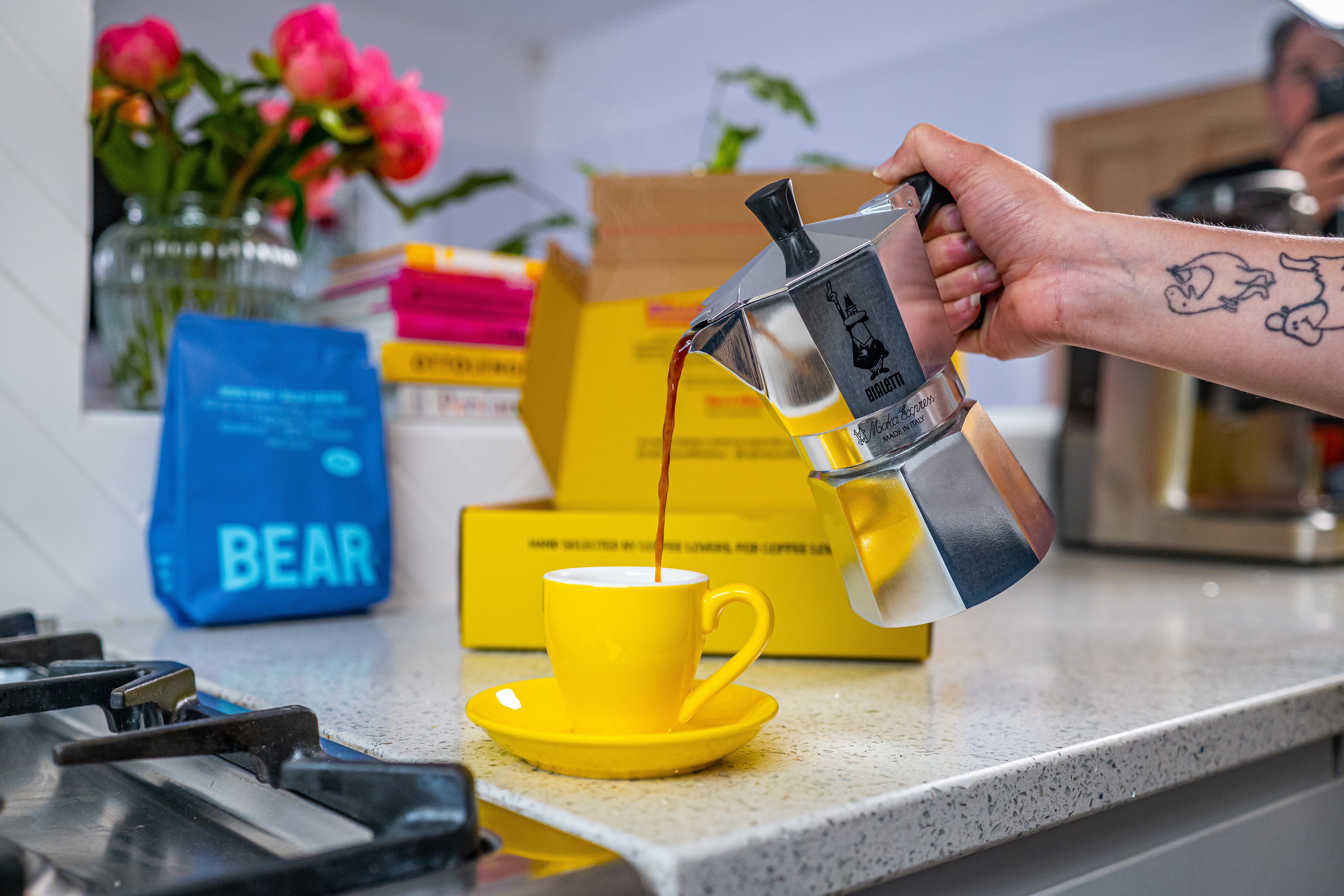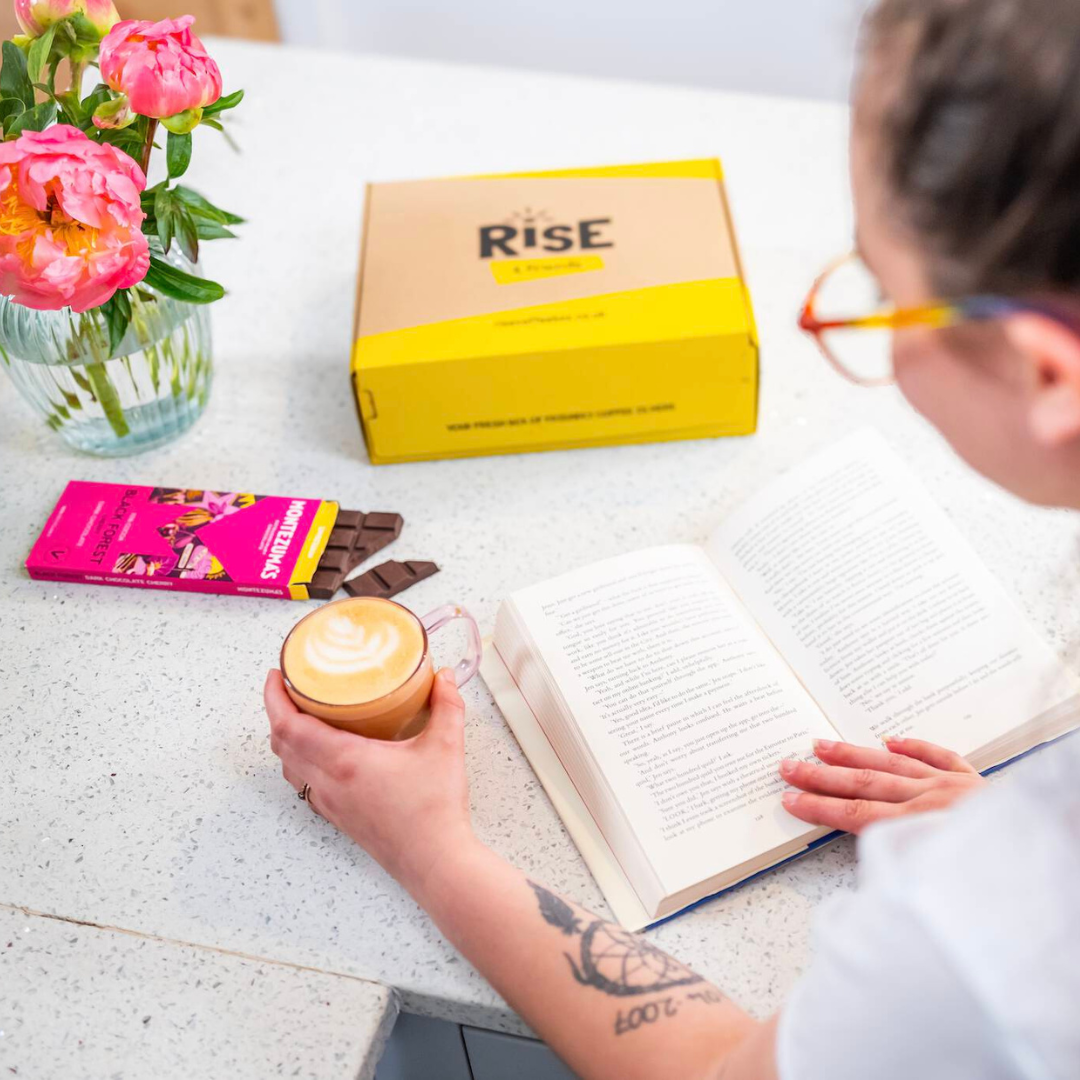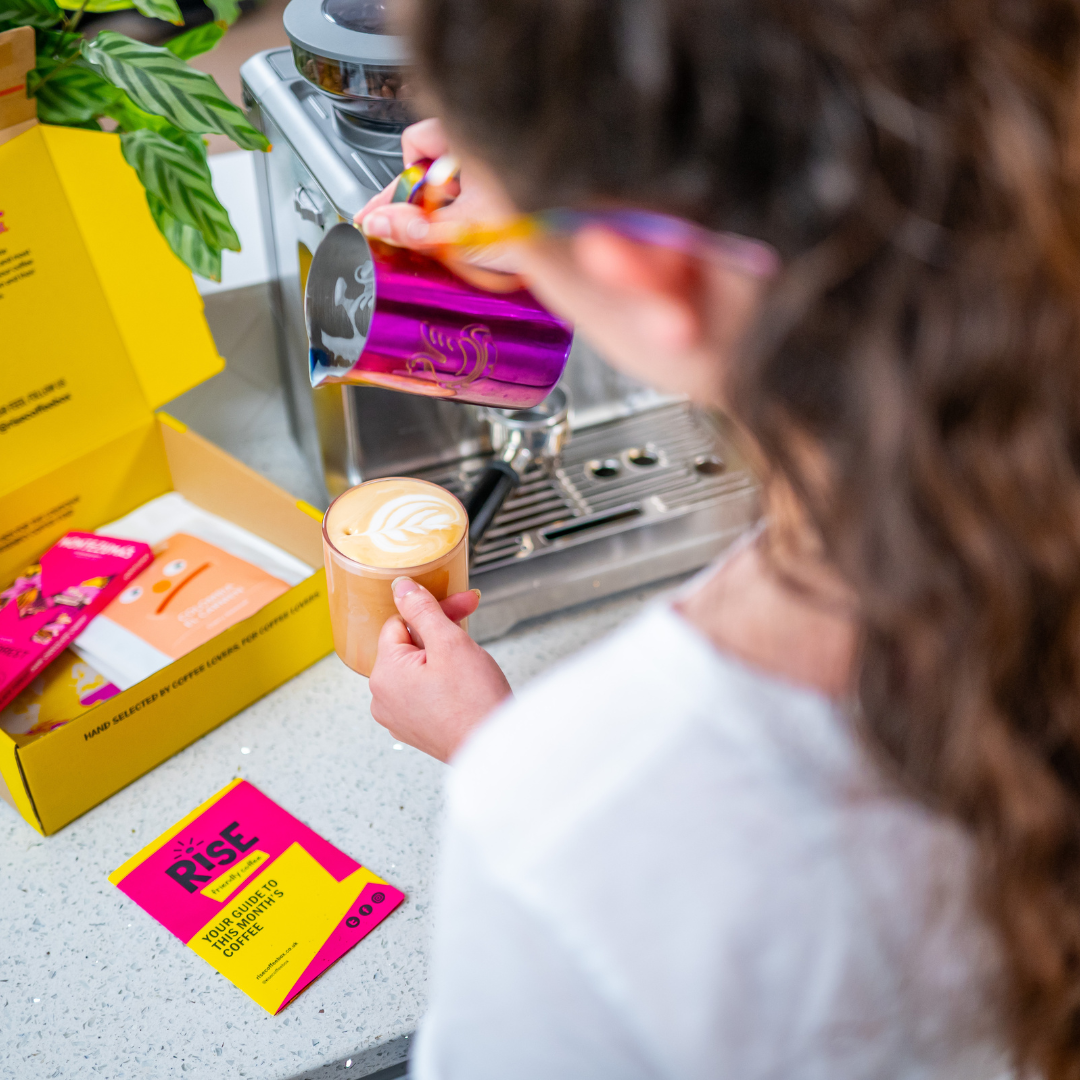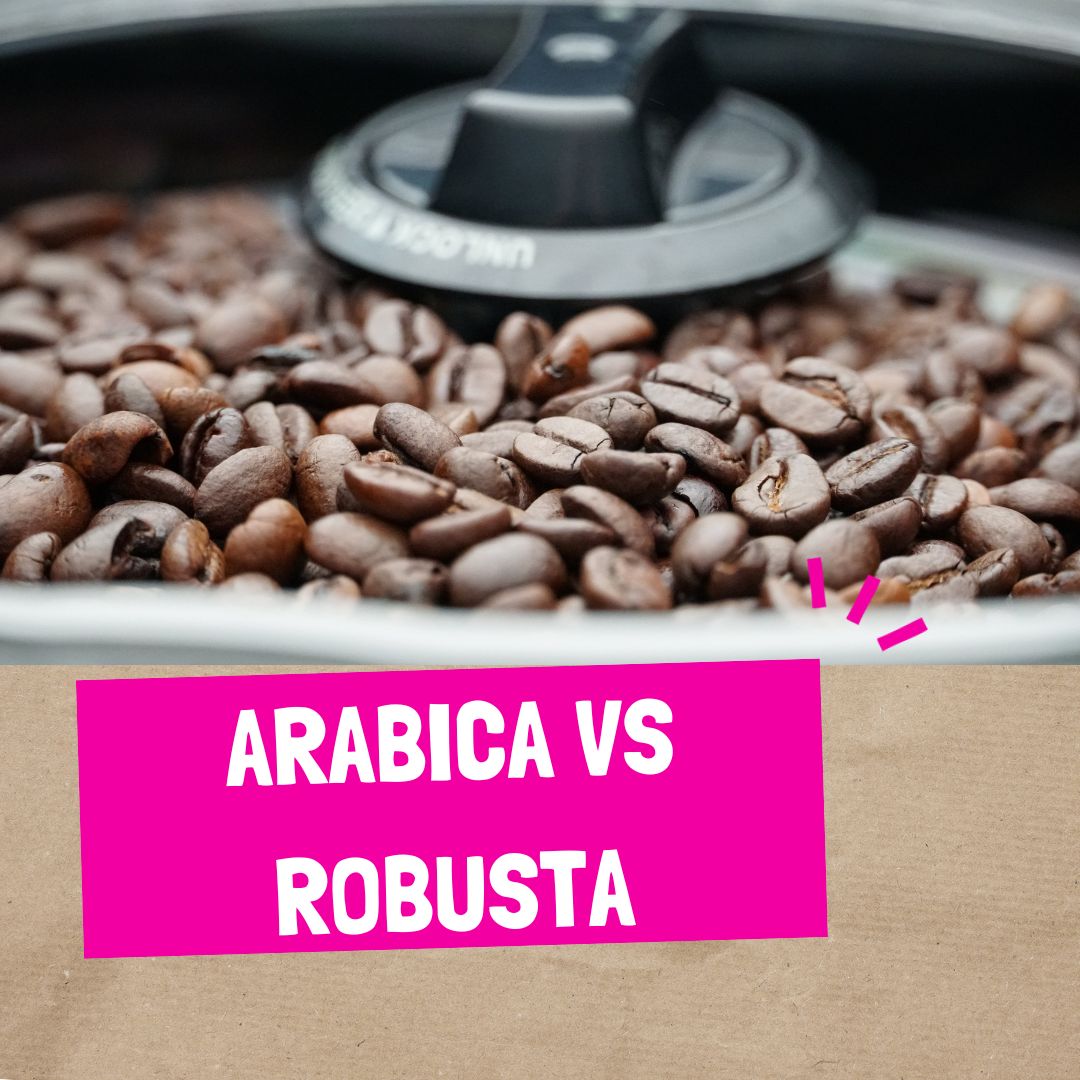Exploring the Rich World of Coffee: The Different Types of Coffee Beans
Coffee, often hailed as the elixir of wakefulness, has captivated people around the world for centuries. Its aroma, flavour, and comforting warmth it provides are just a few reasons why it's a beloved beverage. For the first time, coffee also overtook tea as the UK's number one consumed drink this year. However, what many coffee enthusiasts may not realise is that there isn't just one type of coffee bean; there are several. Each variety brings its unique characteristics to your cup, offering a diverse range of flavours, aromas, and experiences. Arabica and robusta are the most common types of coffee bean making up over 90% of global consumption.
In this blog, we'll dive into the different types of coffee beans that make the world of coffee so intriguing.
The Different Types of Coffee Beans
-
Arabica (Coffea arabica)
Arabica beans are often regarded as the "gold standard" of coffee. They are grown at higher elevations in regions with mild temperatures and consistent rainfall. Our RISE house coffee called "From Uganda For Uganda" is grown around 1800masl whereas a lower quality Robusta bean may be grown at around 650masl. Arabica beans are known for their delicate, nuanced flavours, often described as smooth, mild, and slightly sweet. Generally speaking, the higher the altitude the coffee is grown the sweeter and more complex the taste. They can offer a wide range of tasting notes, from fruity and floral to nutty and chocolatey and are usually medium roasted to preserve these interesting flavour notes. If they are roasted dark the coffee loses these characteristics and becomes bitter. Colombia, Ethiopia, and Brazil are some of the leading producers of Arabica coffee. Arabica coffee beans were first found in Yemen and quickly made their way to Ethiopia before spreading worldwide.
Most "specialty coffee" is only considered specialty if it is an arabica bean.
The below image is from when Ben and Alice from RISE were in Uganda March 2023. You can see how bright and red these Arabica coffee cherries are.

Here are a few facts about arabica coffee beans you may not have known:
- Grows at high altitude only: Having the proper growing conditions is require for arabica coffee which usually include rainfall, soil, and altitude. These trees which can grow 12 meters tall require hilly ground, shade, natural mists, and cloud cover - usually found between 1200 meters above sea level and 2200 masl.
- Arabica coffee is the first bean that was cultivated: Having made its way fro Yemen to Ethiopia, the Arabica bean is believed to be the first coffee bean that was cultivated for consumption.
- Lower caffeine content : While Arabica is renowned for its smooth and complex flavours, it is made up of around 1.5% caffeine vs 2.7% in Robusta beans.
- Global consumption: 60% of coffee consumers are now drinking Arabica coffee.
- No carbohydrates: Arabica coffee contains zero carbohydrates!
- Brazil is the #1 producer of Arabica: Brazil is the largest grower of Arabica coffee beans, producing 38 million bags last year which is around 37% of all Arabica globally.
-
Robusta (Coffea canephora)
Robusta beans are hardier than Arabica, thriving at lower altitudes in regions with hotter climates. They have a stronger, more robust flavour profile, often characterised by earthy, woody, and sometimes slightly bitter notes. Robusta beans contain more caffeine, making them a popular choice for espresso blends due to their crema-boosting qualities. Vietnam and Indonesia are significant producers of Robusta coffee and its generally the bean that you will find in instant coffee.
Here are a few facts about Robusta coffee beans you may not have known:
- Higher caffeine content: Robusta beans contain almost twice as much caffeine as Arabica beans, making them a popular choice for those seeking a more robust, more refreshing cup of coffee.
- Robusta flowers are self-pollinating: Unlike Arabica, Robusta coffee plants have self-pollinating flowers.
- Distinctive flavour profile: While Arabica is renowned for its smooth and complex flavours, whereas Robusta is a lot more bitter, and less acidic.
- Robusta in Italian espresso blends: Italian espresso blends often use Robusta beans to enhance the crema and give the espresso a strong bold flavour. Usually slightly more bitter than arabica.
- Higher production yield: Produced at lower altitudes, this more resilient beans means lower cultivation costs for coffee farmers. Robusta coffee typically produces higher yields than Arabica plants making them attractive to instant coffee industries that require huge volumes.
- Robusta’s role in the specialty coffee industry: Though often overshadowed by Arabica in the specialty coffee world, Robusta has its place. Some specialty coffee roasters and competitions now focus on high-quality Robusta beans, showcasing their unique flavor profiles and potential.
- Vietnam is the #1 producer worldwide of robusta coffee: Vietnam is the world’s largest producer of Robusta coffee, contributing significantly to the global coffee market. The country’s coffee industry has experienced rapid growth and development, with most of its production being Robusta beans.

-
Liberica (Coffea liberica)
Liberica beans are less common and have a unique, wilder flavour profile. They are often described as having woody, smoky, and even spicy notes. Liberica trees are more resistant to certain diseases, making them a valuable alternative in regions where Arabica plants are vulnerable. They are prevalent in West and Central Africa.

-
Excelsa (Coffea excelsa or Coffea liberica var. dewevrei)
Excelsa is a variant of the Liberica bean, known for its tart and fruity flavour. It's often used to add a distinctive tangy note to blends, providing a counterbalance to the smoother Arabica or bolder Robusta beans. It's primarily grown in Southeast Asia and parts of Africa.
-
Peaberry
Peaberry beans are not a distinct coffee variety but rather a unique coffee bean mutation. Instead of the usual two flat-sided beans per coffee cherry, peaberries occur when only one bean develops, resulting in a rounder and denser bean. They are often prized for their concentrated flavour and are considered a delicacy in some coffee-growing regions.
-
Geisha (Gesha)
The Geisha variety has gained fame for its exceptional flavour profile, characterised by floral, tea-like notes, and pronounced acidity. Originally from Ethiopia, it has found success in Panama, where it has been cultivated with great care to produce some of the world's most sought-after coffees.
Read all about some of the best geisha beans here. Can you believe some Geisha coffee can cost up to $110 a cup!The world of coffee is rich and diverse, with each type of coffee bean offering a unique experience for your palate. Whether you prefer the smooth elegance of Arabica, the robust punch of Robusta, or the adventurous flavours of Liberica and its variants, there's a coffee bean for every taste. The next time you savour a cup of coffee, take a moment to appreciate the journey these beans have made from their origins to your cup and the complex flavours they bring to your morning ritual. Coffee is not just a drink; it's a fascinating world waiting to be explored, one cup at a time and that is why we showcase a variety of roasters and origins here at RISE coffee. Our RISE subscription is a real discovery of coffee.

MONTHLY COFFEE DELIVERED TO YOUR DOOR






























Leave a comment